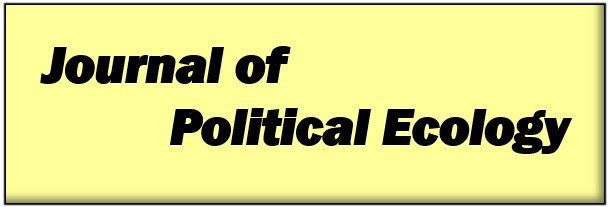Abstract
This article offers innovations at the nexus of theory and method for an ethnographic and engaged political ecology. In it we consider the expansion of digital technologies and digitally-mediated social interactions within and beyond the kinds of geographically out-of-the-way sites that have long animated this interdisciplinary field. These transformations, we argue, are taking place at such vast scope and speed that they merit inclusion in the ongoing critical conversation about the methods, commitments, and contributions of political ecology, especially as these relate to the concepts of distance and difference. Putting our field research in Uganda and Bolivia in conversation with our experiences as xennial ethnographers, here we examine three themes: how digital connectivity is changing "the field" and fieldwork; how the ubiquity of digital technologies is changing the relationship between "the field" and "home"; and how ethnographically grounded political ecologists can position our research in academic settings where digital data is increasingly prevalent and powerful. While the extension of digital sociality across these spaces limits formerly idealized forms of "critical distance", we suggest it productively enables "critical proximity" – a situated ethnographic stance which rests not just on engagement with our interlocutors across time and place, but also responsiveness to the kinds of claims-making that digital social interactions uniquely enable.
Keywords: critical distance, critical proximity, digital ethnography, human difference
How to Cite:
Johnson, J. L. & Keleman Saxena, A., (2022) “On critical proximity: Distance, difference, and digital sociality”, Journal of Political Ecology 29(1), 741–761. doi: https://doi.org/10.2458/jpe.4783
Rights:
Downloads:
Download PDF
View PDF
Funding
- Name
- National Science Foundation
- FundRef ID
- http://dx.doi.org/10.13039/100000001
- Name
- Wenner-Gren Foundation
- FundRef ID
- http://dx.doi.org/10.13039/100001388
2063 Views
1241 Downloads

